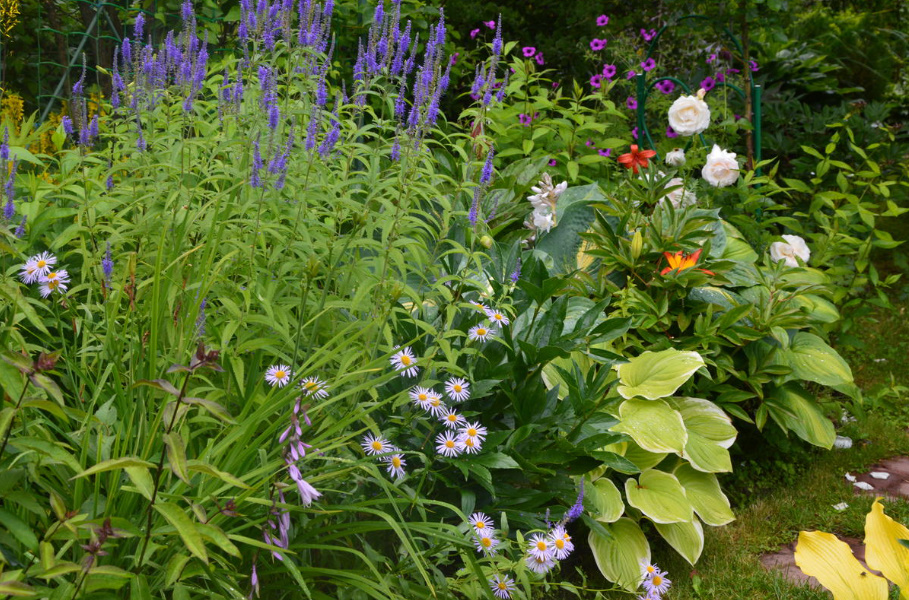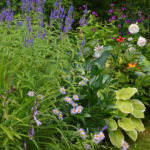Unfortunately, our flower beds usually lose their splendor over time. What’s going on? Some plants grow strongly and crowd each other, others have been ordered to live for a long time, something did not meet our expectations and we should get rid of it, and something, on the contrary, requires planting, and there is no place anymore.
When reconstruction is needed
It happens that we, obsessed with the idea of filling the garden with wonderful plants, succumb to momentary temptations and acquire everything indiscriminately. And then we plant it where there is a free place. As a result, our flower beds turn into a haphazard, eclectic and chaotic jumble of plants. And even if at the beginning the flower garden had a certain structure, then over time it inevitably loses it.
For some time, you can limit yourself to “cosmetic repairs” — to clean up something or restrain growth, but sooner or later there comes an urgent need to alter the flower garden. This is also due to the depletion of the soil: ordinary fertilizing becomes insufficient, it is necessary to thoroughly improve the land, make hefty portions of rotted manure or compost.
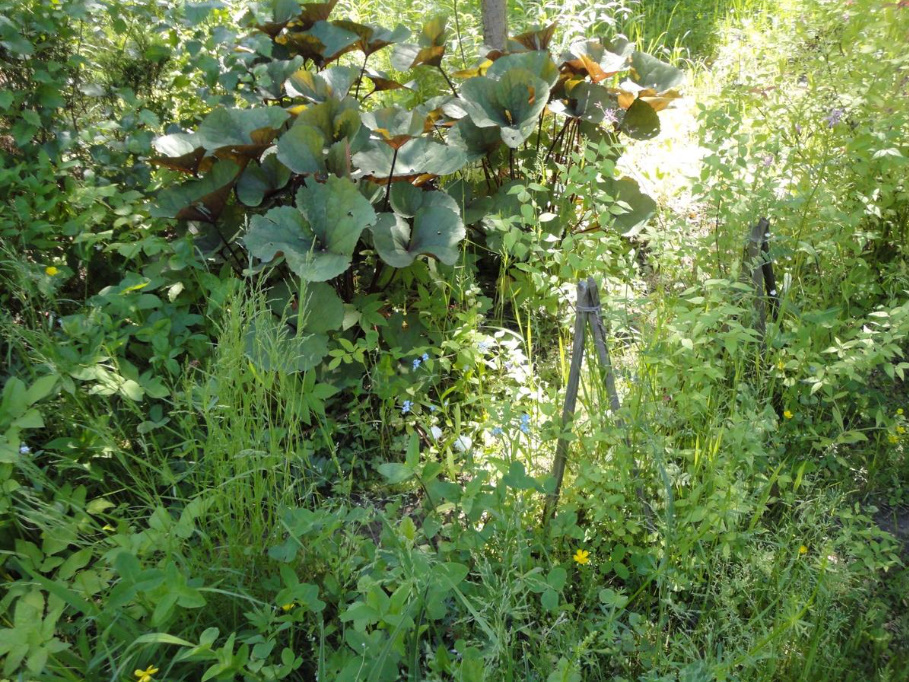
Overgrown flower garden
Over the years of its existence, the flower garden, despite timely fertilization, begins to degrade: plants look oppressed, bloom poorly. In addition, trees grow in the garden — the illumination changes. If at first annual and sun-loving plants feel great in the bright sun, then a change in the species composition of flower beds will be required in a shady garden. We have to give priority to shadow-tolerant representatives.
And what can we say about perennial weeds! They’ve been bothering us for years. But if we can somehow cope with annual weeds, then wheatgrass, aspen, horsetail or the ubiquitous Aegopodium require total destruction, which is possible only with the capital reconstruction of the flower garden. There is a chance to finally get even with them.
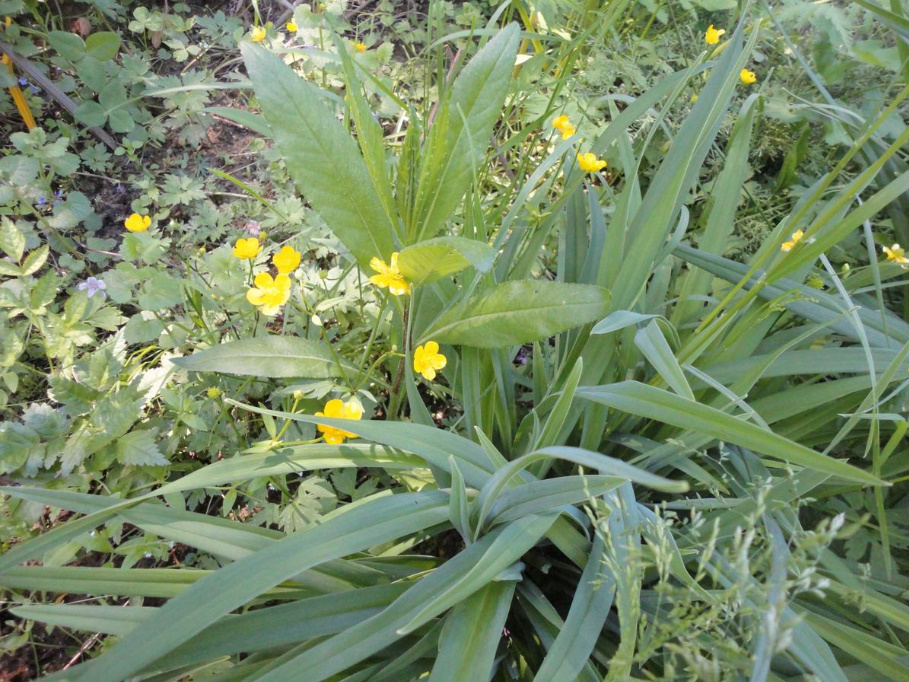
The problem of any flower garden is the ubiquitous weeds
All these circumstances force us to embark on such an inevitable operation as the reconstruction and renovation of the flower garden, although sometimes it is easier to break it in a new place.
Planning a flower garden
What is required to get started? First, a clear plan of action. Reconstruction can be carried out in several stages, but adhering to the planned scheme. Capital reconstruction of flower beds is a tedious and time—consuming business, you can not manage in one season. It will take a year or even two for you to realize your dreams.
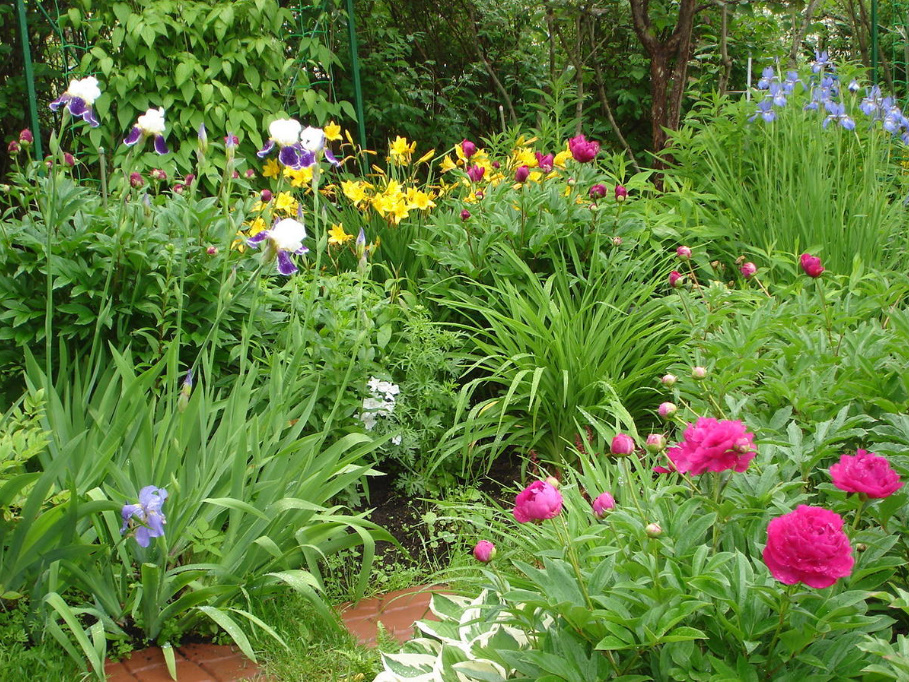
It may take more than one year to realize a dream
Secondly, the plan should be based on some specific idea. You can’t cram everything you like into one boat. It is necessary to approach the choice of filling the flower garden quite selectively, guided not only by your preferences, but also by common sense. At first, so that the flower garden does not seem empty, you can sow a cosmea and plant dahlias, filling the empty spaces.
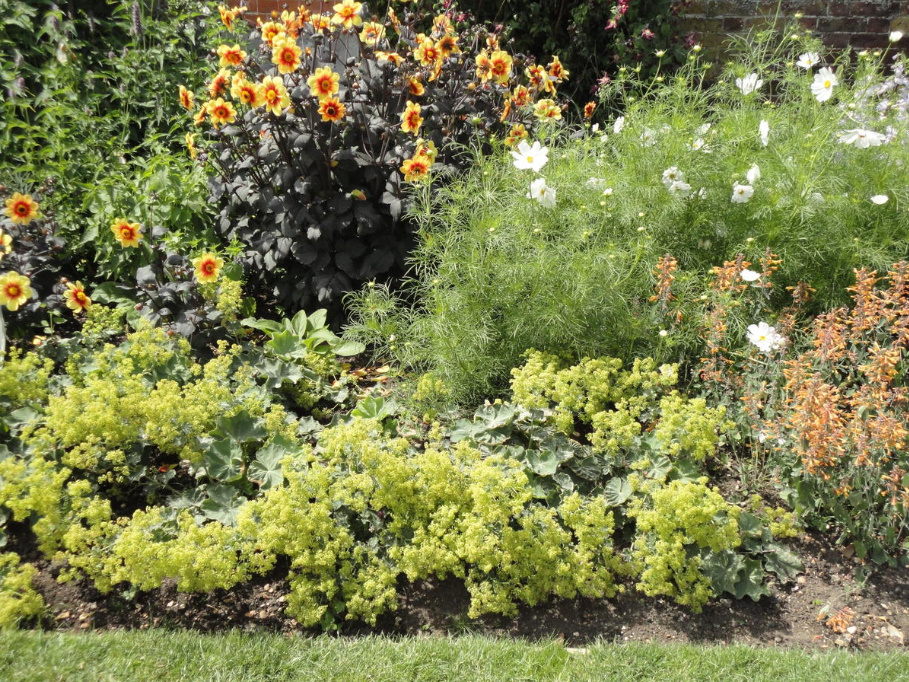
It is necessary to approach the choice of filling the flower garden, guided not only by your preferences, but also by common sense
Evaluate the environmental conditions of the planned flower garden, its illumination, soil type; finally, take into account its size, the flower garden is not rubber. No matter how much you would like to plant the vacated area with everything that is sweet to your heart, think about the fact that in a few years, when the plants come into force and grow, they will become cramped again, and another renovation will be required.
Where to get ideas
As for the idea, you have a unique opportunity to fantasize about what a new flower garden should be. Read literature, articles on the Internet, look through magazines. It so happens that you suddenly see your ideal flower garden ready in the picture — and you want to bring it to life. That is, approach the creation of a new flower garden as creatively as possible.
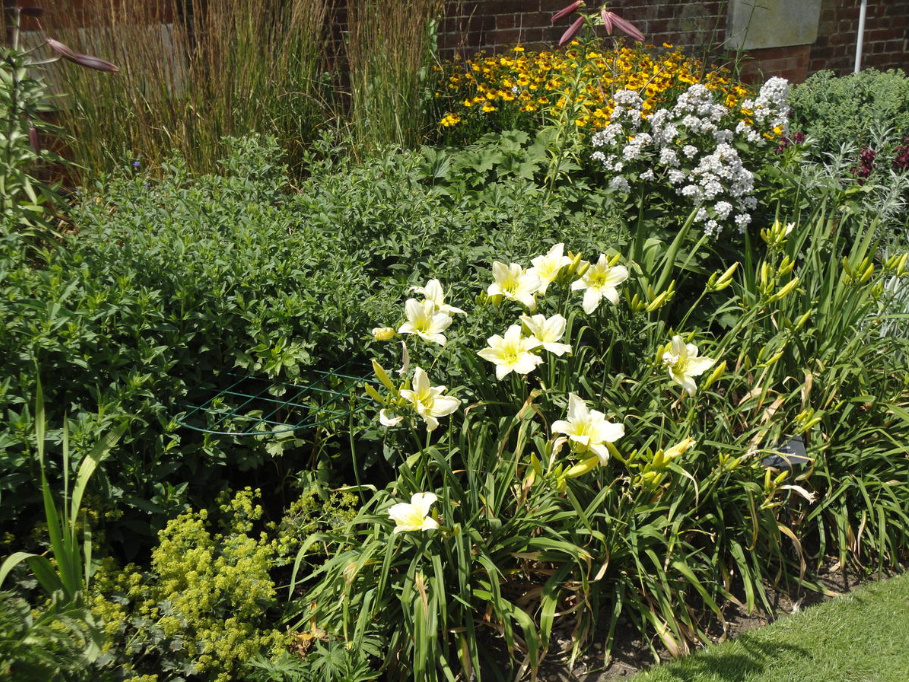
An interesting example to follow. White daylilies of the same variety look very elegant
Maybe it will be a white or blue-and-white kindergarten? A rather ambitious project is a monochrome flower garden made in your favorite colors, where plants of pink—purple color or cream-yellow colors will dominate. Or maybe you decide to create a monocolor, for example, from Heuchera, of which there are a huge number, or from host, of which there are no fewer.
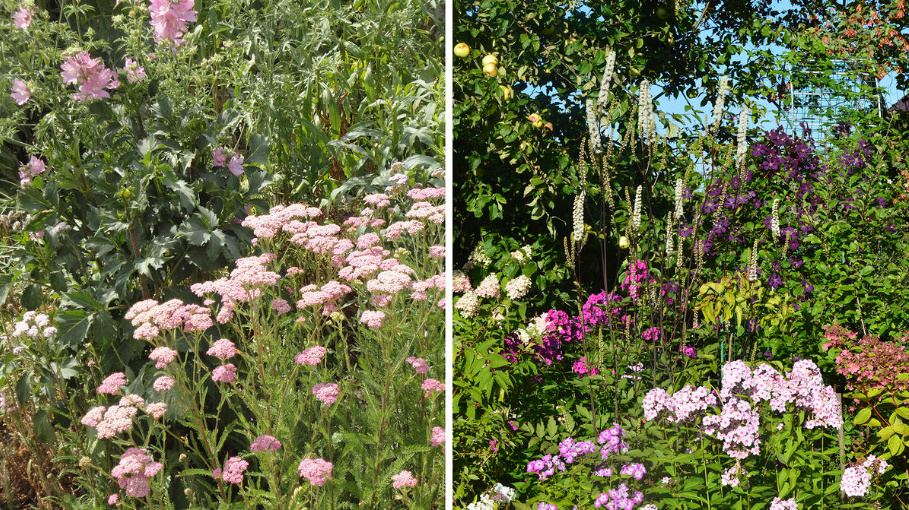
Color combinations. On the left — to the pink yarrow, we select companions (perennial lavater) in color. On the right is an exquisite composition of Cimicifuge Polygonatum with pink—purple phloxes
It is better for busy people to limit their appetites and create a laconic flower garden of three types of low—yield plants, such as conifers, daylilies and astilbes, supplementing them with spring bulbous – species tulips, muscari, daffodils and hyacinths.
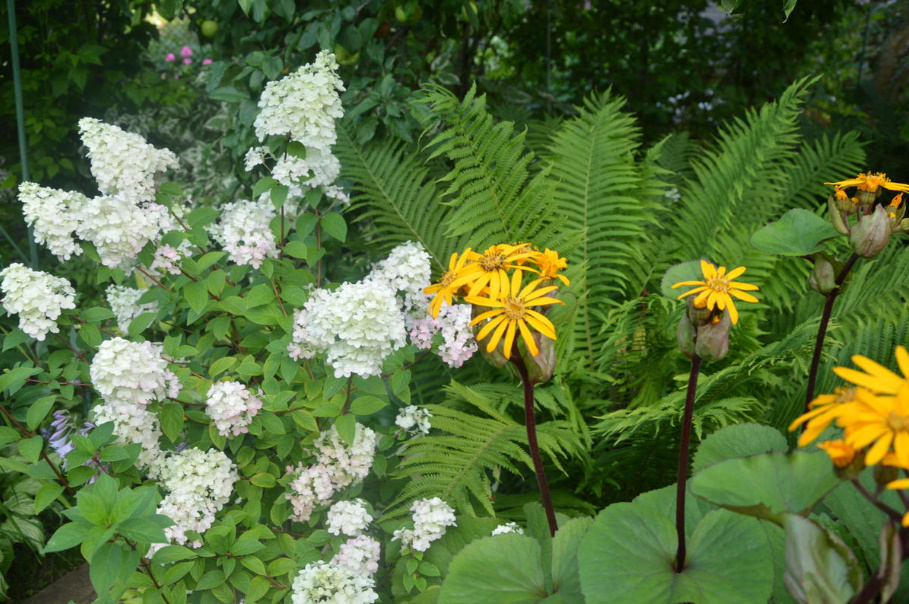
It is better for busy people to create a concise flower garden
I especially want to note: do not try to implement the speculative plans of flower beds that are offered by printed publications. All this is nothing more than a figment of the designers’ imagination. As a rule, you cannot expect simultaneous flowering of the plants presented there: they bloom in turn, so it will not be possible to achieve an ideal result. It is better to observe how the flowers behave in your own garden. And only after making your own conclusions about the timing of flowering, the combination of colors, sizes and habitus of plants, make a plan of compositions.
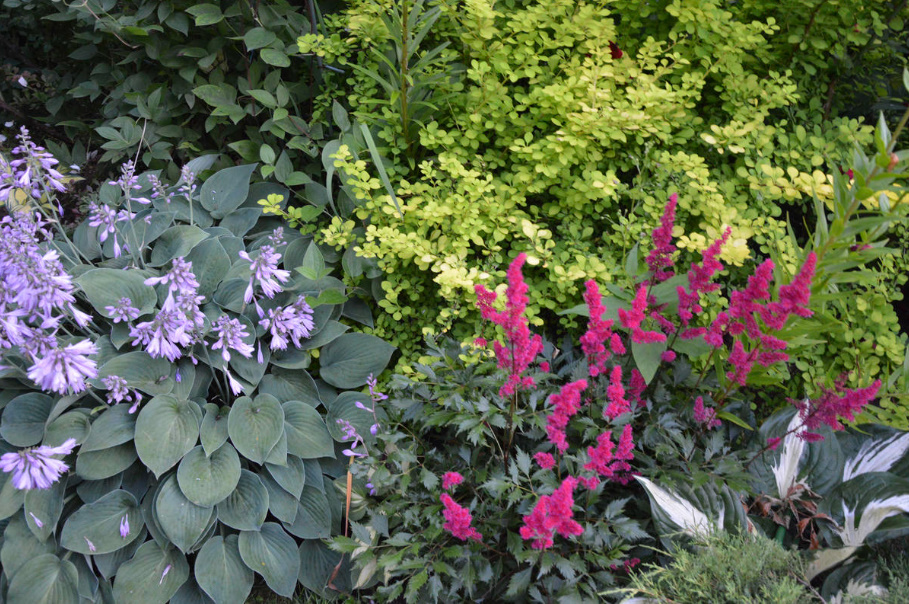
A harmonious combination of plants.
